These come back to me every now and again, learned at Carrowdore Sunday School over 30 years ago.
Look them out, get them gone
All the little rabbits in the fields of corn
Envy, jealousy, malice and pride
These must never in my heart abide
It's a moral lesson from Mark ch 7 rather than clear gospel theology - but there are some folk who could do with looking in the mirror and learning from its wisdom.
Tuesday, October 29, 2013
Wee Sunday School songs
Saturday, October 26, 2013
A forgotten Ulster author - Richard Cuninghame Esq. of Castle Cooley, Donegal (c. 1832 – 1908)
Over the centuries, some writers have published popular novels to bring Ulster-Scots history to the general reader. Richard Cuninghame is one I have recently discovered.
In Bonds but Fetterless (1875)
This two volume novel is set in 1660s County Down during the time of Captain Thomas Blood's plot to storm Dublin Castle and kidnap the Lord Lieutenant of Ireland. Many Ulster Presbyterian Covenanters were involved in this attempt, and more were seized and arrested on suspicion of involvement. A description of the novel reads as follows:
'... Historical fiction set in Ulster in the time of Charles II. The novel's introduction mentions details of the plantation of the Scots in Ulster under King James I. The story opens in 1661 in a farmhouse of Scottish Presbyterians in Co. Down and deals mainly with relations between the Afton family of Ellerslie and survivors of the O'Neills, who still inhabit their ancient castle, some of whom have become Protestants. The book presents the reactions of the Ulster Presbyterians to the persecution started by the 'Prelatic Church' under Charles II. A conspiracy by the Covenant is begun by two dubious characters, Blood and Lecky, but Ulster Presbyterians hold aloof. Many personages of the day are introduced and the plot moves between Belfast ('Plekopolis') and Dublin...'
A quick Google search shows it among the collection of Brisbane Circulating Library, Australia, being advertised in the Brisbane Courier on Monday 3 December 1877.
The Broken Sword of Ulster (1904)
This is a popular account of events in Ulster from the late 1500s through the Nine Years War, the death of Elizabeth I, the escape of Con O'Neill, O'Doherty's rebellion and the Plantation. The scattered footnotes show that Cuninghame's story drew heavily from the accounts of Andrew Stewart, Rev George Hill and Rev James Seaton Reid. The book is now available online here. It was probably published after Cuninghame had died.
Biography
Richard Cuninghame is believed to have been born around 1832, the son of Dr Hugh Cuninghame (1794-1878) of Castlecooley, near Burt, in Donegal (Dr Cuninghame is said to have been at St. Helena while Napoloen was exiled there from 1815–1821).
On 29 November 1860 Richard married Mary Henry from Tassagh, Armagh, at Tassagh Presbyterian Church - and in the 1869 Hill edition of the Montgomery Manuscripts, 'Richard Cunningham, esq., Castle Cooley, County Donegal' is listed in the Preface as one of those who assisted with the footnotes research. The National Library of Ireland has his genealogical research (see here) compiled in 1898. A collection of his papers and manuscripts may still exist.
He died on 2nd May 1908 at his home at 3 Salisbury Terrace, Portrush, in his 77th year.
His son was Rev Hugh Harvey Cuninghame who graduated from Trinity College Dublin in 1890 and became a Church of Ireland rector at Ballywillan, Magherafelt and Arboe.
Scottish origins
The History of the counties of Ayr and Wigtown (1866) contains these details about the family:
'... Not a few Ayrshire families are represented by branches in Ireland. This originated chiefly in the colonisation of Ulster by the Scots, under Montgomerie, in the hitter end of the reign of James I., and by subsequent emigration. Amongst other still existing Scoto-Irish families are the Cuninghames of Castle Cooley, near Londonderry. The first of them was the Rev. Hugh Cuninghame, who went to Ireland in 1642, as chaplain to a regiment commanded by the Earl of Glencairn. About that period, an army of ten thousand men, chiefly from the west coast, were sent over by the Scots Government to protect the colonists there during the rebellion. The Rev Hugh Cuninghame did not return with his regiment when the army was withdrawn, but settled as minister of the Presbyterian congregation at Ray, county Donegal, about 1G46. He was ejected by the Bishop of Raphoe in 1662. From this reverend gentleman the Castle Cooley family are descended ; but to which of the Scottish houses he belonged it is difficult, or perhaps impossible, to discover. He would be appointed chaplain by the Presbytery of Irvine : but, unfortunately, their records go no farther back than 1646, and not one of the parish registers exists at so early a period. The register of the University of Glasgow shows that a Hugh Cuninghame matriculated 1st March 1630, and graduated in 1634. This is no doubt the same party, but he is not designed. He was probably connected with the Cuninghames of Glengarnock, who sold that property, and went to Ireland about 1600. Their place, Castle Cuninghame, is near to Ray (Donegal) ...'
Friday, October 18, 2013
Thursday, October 17, 2013
When Northern Ireland spoke for Britain - a 1956 advertisement for the British Travel Association

This ad is from the US magazine 'Holiday', for the British Travel Association. The main image is of Greencastle, County Down, on the shore of Carlingford Lough. It's an area with both Viking and Anglo-Norman heritage. It was captured by Edward Bruce in 1316, and is also recorded that his brother King Robert the Bruce of Scotland offered to broker a peace agreement with the King of England - with Greencastle as the proposed venue for the negotiations - around 1326. Edward Bruce was of course killed nearby in a battle in 1318 and his body (or bits of it at least) are buried in an ancient graveyard there.
Greencastle was used as an English garrison in the late Elizabethan period in the 1590s - and it's still an impressive building and location today. Northern Ireland is seldom, if ever, used to promote the wider 'nation' (however you choose to define that), we tend to get pushed to the periphery. How different it was 50 odd years ago. I still believe that our multi-cultural mix makes Northern Ireland one of the most interesting heritage locations in the UK / Ireland. My English relatives were surprised to see so many Anglo-Norman castles in our small area of east Down on a visit last year.
I was fishing for tope on Carlingford just over a year ago with some friends and took the photos below from the boat.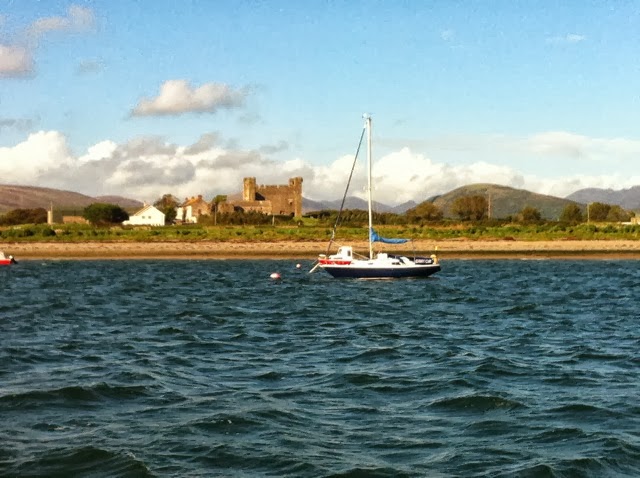
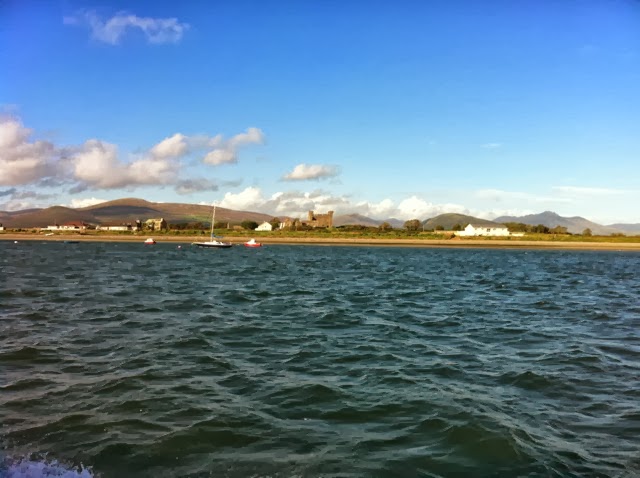
Below: The view from the Irish Sea into the mouth of Carlingford Lough - Co Louth to the left and Co Down to the right.There is some talk about building a bridge across the Lough.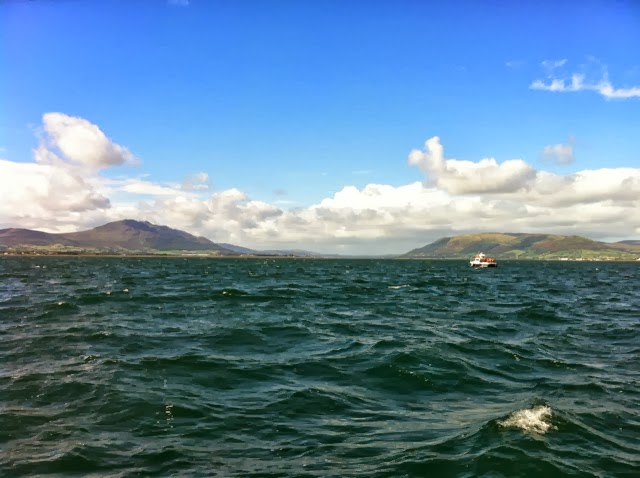
Monday, October 14, 2013
Robert Burns Centenary Celebrations - the Music Hall and the Corn Exchange, Belfast - 25 January 1859
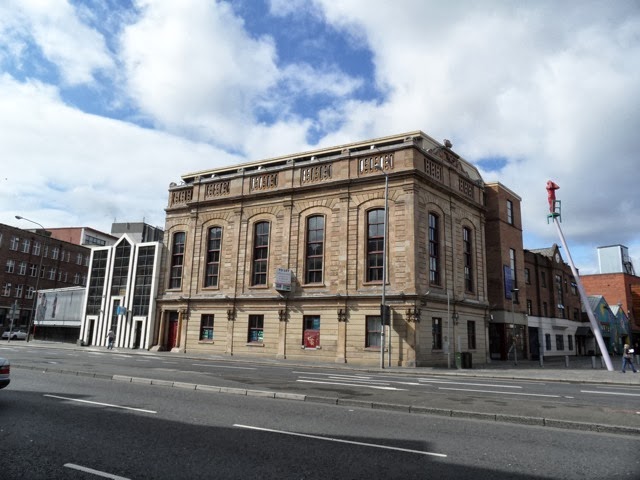
At Belfast Music Hall a festival was held (and in other towns in Ireland too). Professor George Lillie Craik (who just 2 years later published 'History of English Literature and the English Language') of Queens College gave a rousing speech which included these remarks:
'... this is not Edinburgh or Glasgow, but Belfast. It is true that Burns belongs to Scotland, and not to Ireland; but besides that, many of us now present are Scotchmen by birth, and can only claim the honour of being Irish by adoption, or by sufferance; it might also be made a matter of question whether this Ulster of ours be not really more a part of Scotland than a part of Ireland ... we have come over and set up another Scotland here - an Irish or Little Scotland, as it may be called. We have made this Province of Ulster - this Black North - half Scotch, or more than half Scotch, in almost everything – in blood, in language, in religion, even in mind and character ...'
Hugh McCall of Lisburn said that '... not even in his own Ayrshire is the poetry of Burns held in higher estimation than it is in the counties of Down and Antrim ... Had the poet Burns, when on his deathbed in Dumfries, been able to look through the vista of years, and see that, at the end of a century from the date of his birth, the people of Belfast would have met in such glorious assembly as I see in this room, it would have given comfort and no doubt considerable happiness ...'
Burns' daughter and granddaughter were among the crowd that night. At the same time as the Music Hall banquet, a soiree was held at the Corn Exchange (pictured above) with about 400 in attendance 'composed principally of the more respectable of the working orders', with prominent figures such as Rev Dr M'Cosh, Rev Hugh Hanna, Rev George Cron, Rev Mackey and Mr John Ritchie all in attendance. The Oldpark Band were there and played a selection of Burns' airs throughout the night, and Ritchie sang a rendition of 'Rantin Rovin Robin'.
Detailed accounts of the events in both places are readily available.
Friday, October 11, 2013
Belfast-Glasgow Wine Jug
One from the collection which came up in conversation the other day, probably made for a firm called John Grant Wines & Foods Ltd who owned various hotels and restaurants on both sides of the water. The curved message reads 'A meal without wine is like a day without sunshine'; the four venues are the Grand Central in Belfast, Rogano Restaurant & Sea Food Bar in Glasgow, the Royal Restaurant in Glasgow and the Buchanan Arms Hotel in Drymen, north of Glasgow. Made by J Abrahams & Sons Ltd, no date marked on it but must be around 1927 when Grant took over the Grand Central. It was demolished in the 1990s and CastleCourt shopping mall is on the original site. See article here on CultureNorthernIreland.org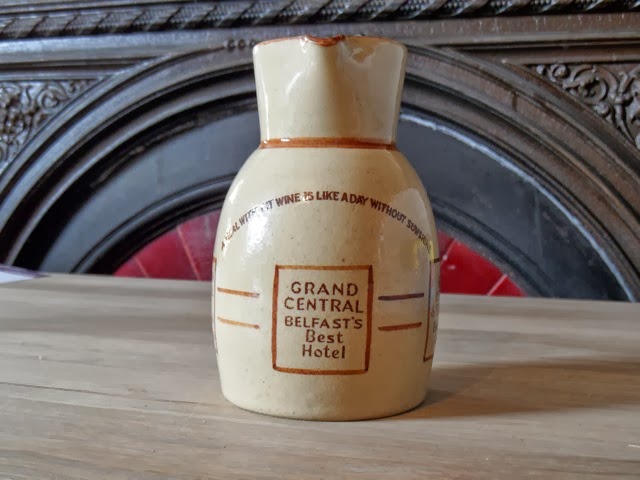
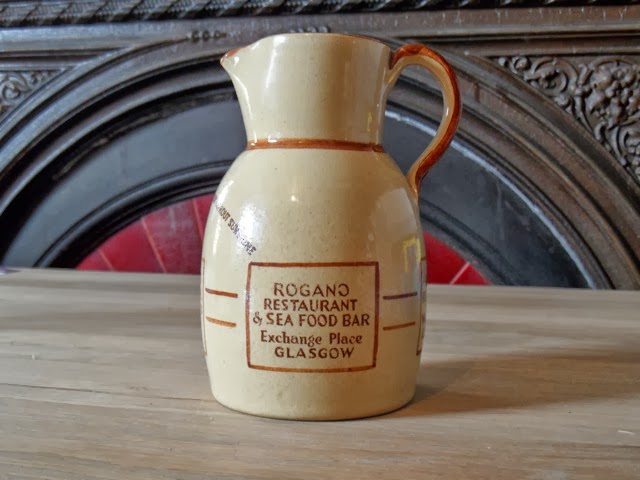
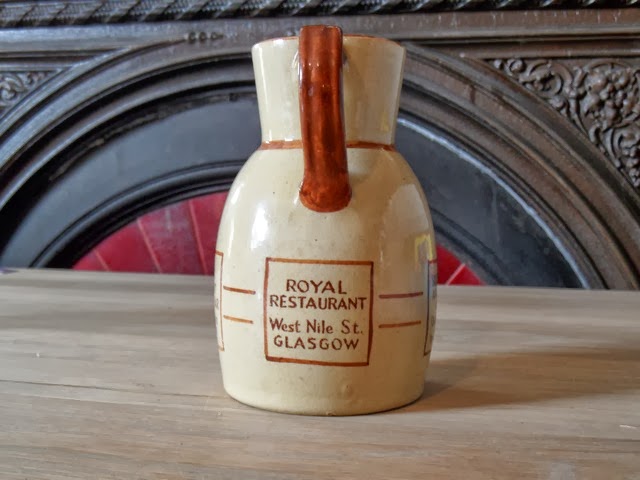
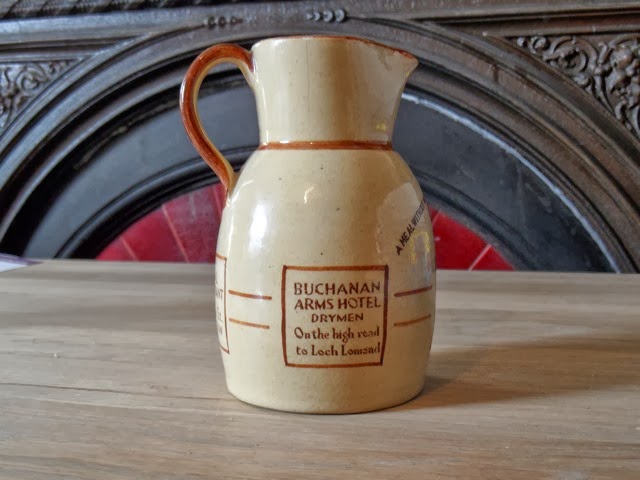
There is a similar example online here.
Thursday, October 10, 2013
George Francis Savage Armstrong (1845–1906)
Some of you will know how much I enjoy this man's work (see this previous post) both his poetry, some of which is Ulster-Scots, and also his epic family histories. I was pleased to help Rosemary Raughter from County Wicklow earlier this year who has published this online article about his time in Wicklow. Over the summer I went looking for his grave up at Ardkeen Church - it is thought to be among the thick overgrowth below the ivy on the wall of the building. It has been described as a 'monumental altar-shaped tomb outside, and close to, the south wall of the ruined Church'.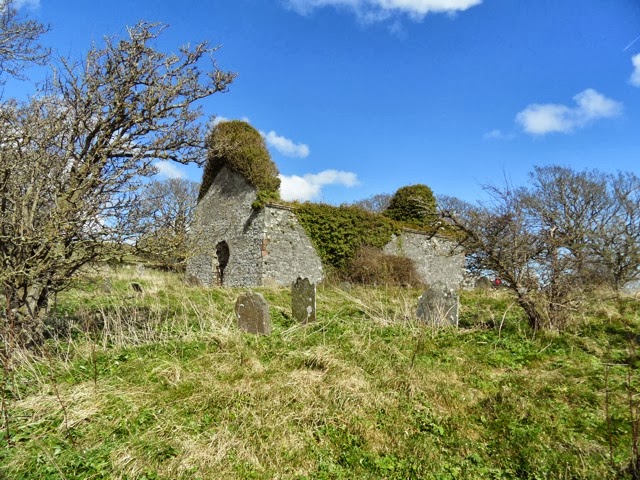
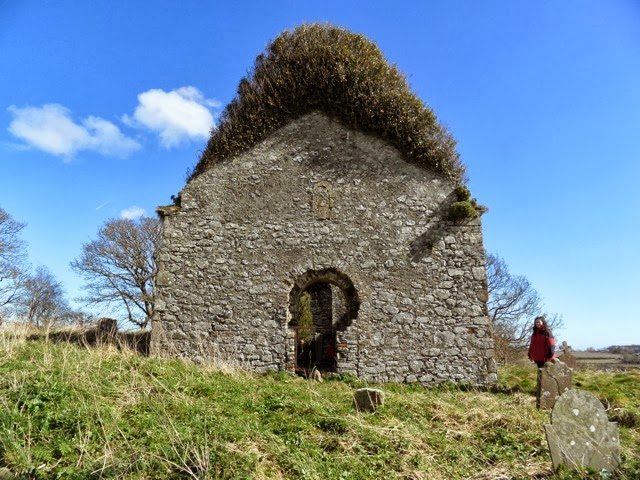

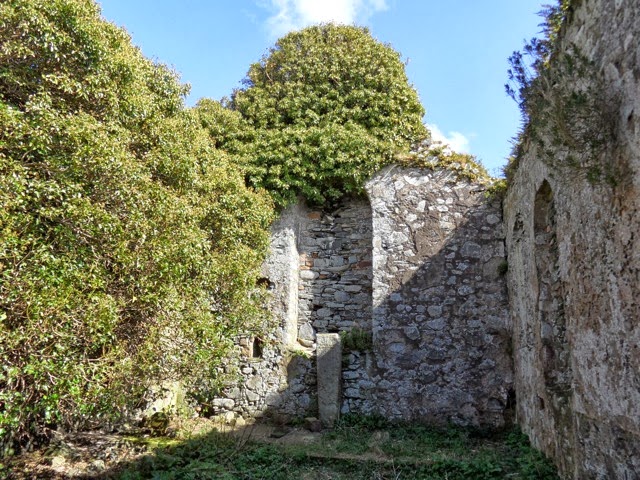
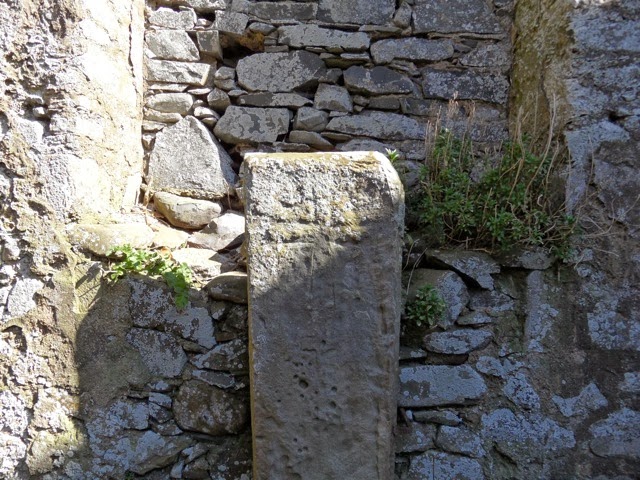
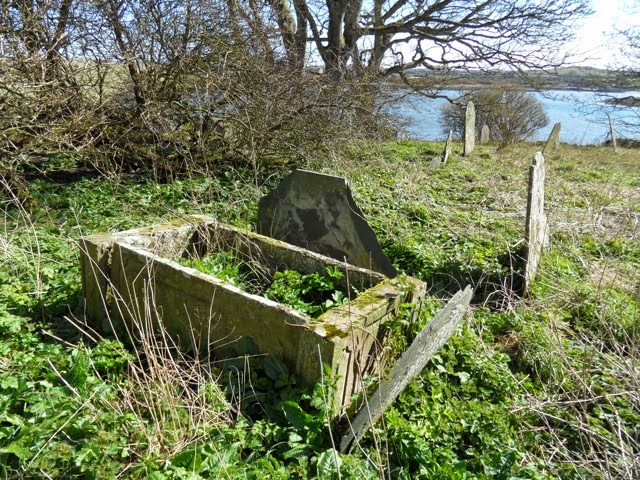

He lived in his latter years at Strangford, in the house which overlooks the village, shown here just behind the old castle. A selection of his work, Poems National and International, was published in 1917 as a memorial to his eldest son, the Dublin-born Lieutenant-Colonel Francis Savage Nesbitt Savage-Armstrong, who was killed at Arras on 23rd April 1917 whilst serving with the Royal Warwickshire Regiment, aged 36.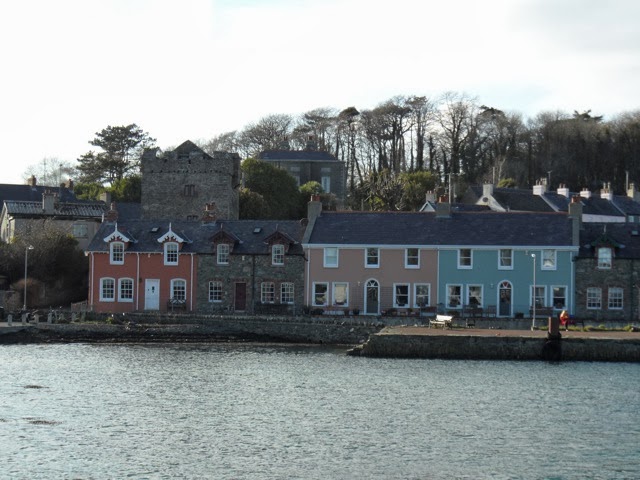
Monday, October 07, 2013
Saturday, October 05, 2013
An Ulster-Scottish-Viking-Pictish artefact
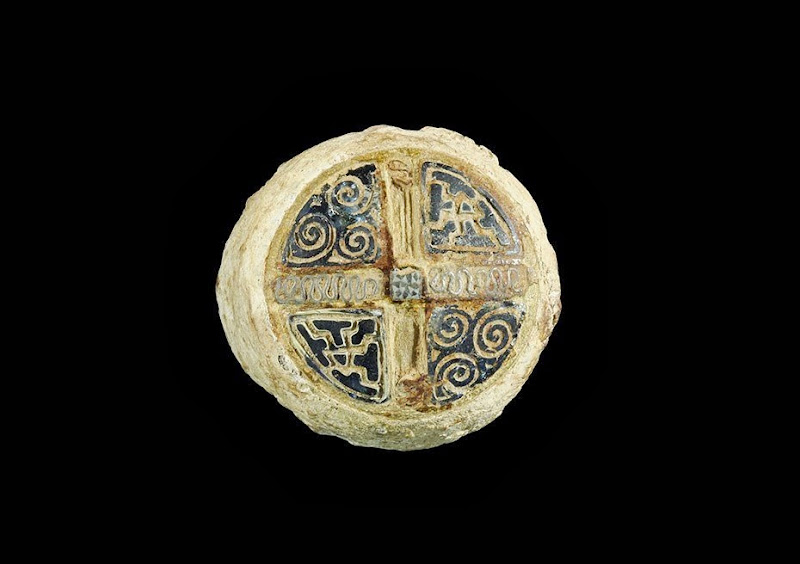
Coming up for auction in England soon is this artefact. It had the following remarkable - truly multicultural - description:
8th-10th century AD. A Hiberno-Norse discoid weight with domed upper face with inset decorative panels comprising two quadrants with three spirals each, two quadrants with T-shaped keys executed in niello; between these interstitial bands of s-scrolled wire; central millefiori panel with chequerboard design; to the underside a discoid panel. 86 grams, 36 mm (1 1/2"). Found Northern Ireland, UK. The decoration of the quadrants is of Pictish workmanship. The same motifs are carved on the 8th century AD Hilton of Cadboll Stone (from Ross and Cromarty; now in the National Museum of Scotland) and elsewhere. These elements must be considered as loot or traded items which were embedded into a lead matrix in order to embellish the weight.
Auction listing is here.
(This artefact will get no media coverage as it's not political. And if a museum here purchases it, they will probably interpet it as merely geographically Irish thereby losing the nuanced and important cultural complexity)


